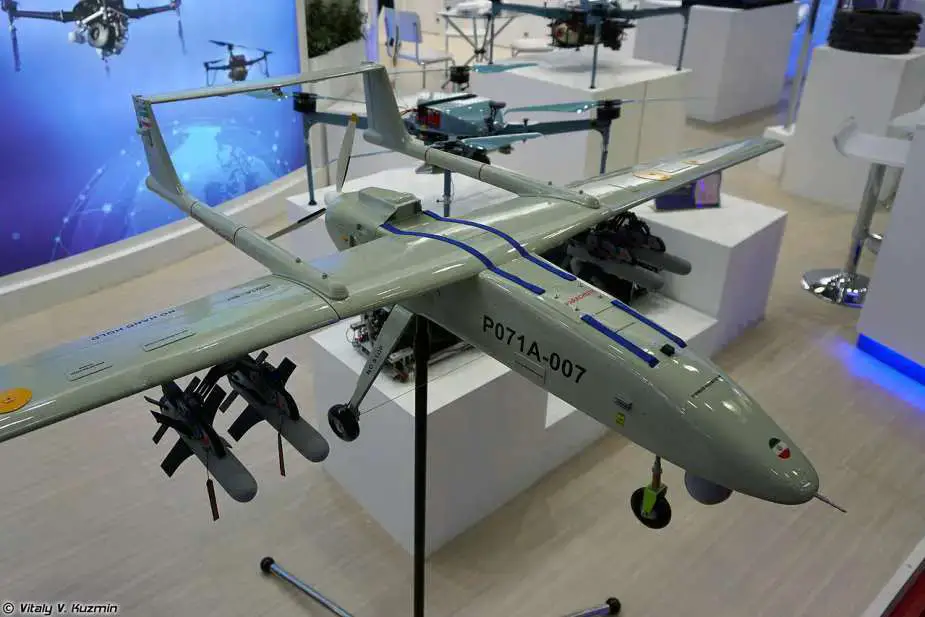Breaking news
Iran to deliver Mohajer-6 attack drones to Sudan.
On February 29, 2024, Semafor reported, citing American and Arab officials, that Iran has escalated its deliveries of attack drones to the Sudanese military. This development signifies a deepening of Tehran's military involvement in Sudan. The drones, identified as the Mohajer-6 type, are designated for use by the Sudanese Armed Forces (SAF) amidst the ongoing conflict with the Rapid Support Forces (RSF).
Follow Army Recognition on Google News at this link

Iranian Mohajer-6 unmanned aerial vehicle (Picture source: Vitaly Kuzmin)
This development comes in the context of a prolonged civil war in Sudan, where clashes between the SAF and RSF have led to a deep division of the country and repercussions on neighboring nations. Iran's introduction of attack drones is seen as an effort to influence the balance of forces on the ground, with the SAF seeking to counter the territorial advances made by the RSF.
The Mohajer-6 drones, sent by Tehran, represent a potentially significant modern armament element in military operations in Sudan, offering the SAF increased capacity for offensive and defensive operations. This development is part of a diplomatic and military rapprochement between Iran and Sudan, initiated last October 2023 after a period of strained relations.
This Iranian drone is distinguished by its maximum speed of 200 km/h (124 mph) and an impressive endurance of 12 hours, allowing it to cover vast areas. With a flight ceiling between 4,900 meters and 5,500 meters (16,000-18,000 feet), this drone can operate at high altitudes. Its design includes a forward-looking camera for continuous surveillance, independent of the camera located under the drone, thus increasing its versatility and intelligence capabilities. It also has a length of 5.5 meters and a wingspan of 10 meters.
Iran's interest in renewing its relations with Sudan, illustrated by the recent diplomatic warming and the visit of the Sudanese Acting Foreign Minister to Tehran, is based on deep strategic motivations. Since the 1990s, Iran has sought to break out of its international isolation by establishing alliances in key regions, such as the Horn of Africa, where Sudan represents a major strategic partner. Strengthening these ties, particularly through military cooperation and technical assistance, falls within the asymmetrical doctrine of the Islamic Revolutionary Guard Corps (IRGC), aimed at extending Iran's regional influence through a network of allies and partners. This network, known as the "Axis of Resistance," seeks to counterbalance Western powers and their regional allies, while offering Iran pathways for power projection in geostrategically sensitive areas. The delivery of Iranian-made Mohajer-6 drones to Sudan fits into this logic, providing Khartoum with significant military support that enhances the combat capability of the Sudanese forces while consolidating Iran's position as an influential actor in the region.























